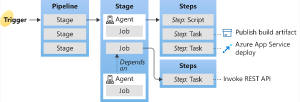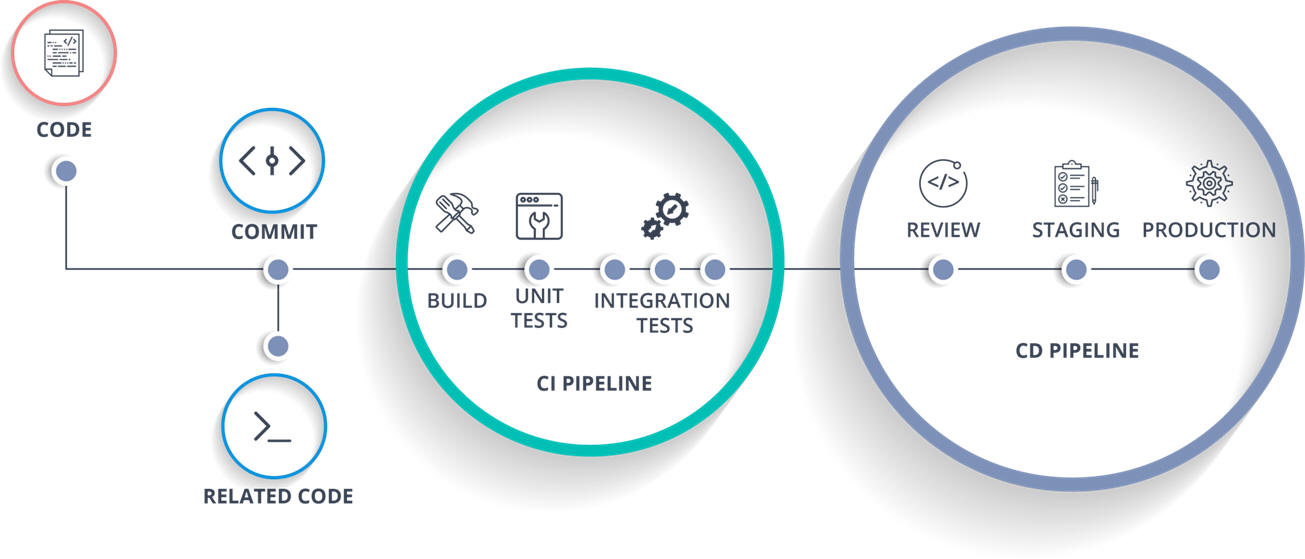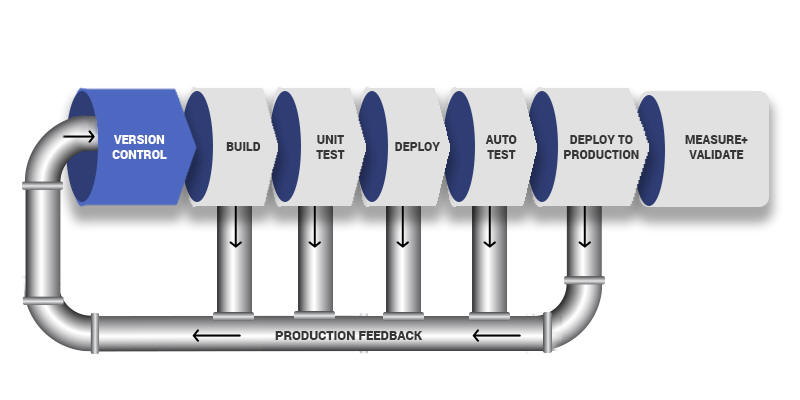 `
`Build Dev/Ops Pipeline Workflow
As part of an Office 365 deployment, you can migrate the contents of user mailboxes from a source email system to Office 365. When you do this over time, it's called a staged migration. A staged migration is recommended when:
![]() Your
source email system is Microsoft Exchange Server 2003 or Microsoft
Exchange Server 2007.
Your
source email system is Microsoft Exchange Server 2003 or Microsoft
Exchange Server 2007.
NOTE: You can't use a staged migration to migrate Exchange 2013 or Exchange 2010 mailboxes to Office 365. Consider using a cutover migration or a hybrid email migration instead.
![]() You
have more than 2,000 mailboxes.
You
have more than 2,000 mailboxes.
If a staged email migration won't work for you, see Ways to migrate email to Office 365 for other options.
The main steps you perform for a Cutover Migration are shown in the following illustration:

Configuring DevOps Pipieline Trigger Events Processing
Perform a staged migration of email
to Office 365. Applies To: ... To create a staged migration
batch. In the Exchange admin center, navigate to Recipients >
Migration.
Infrastructure (Operations) and Code Development (Development) | Minimum Viable Produc
the Minimum Viable Product (MVP) pipeline that delivers the infrastructure aspect as well as the code deployment aspect.
Commonly-used technology stacks in the infrastructure DevOps pipeline.
- Jenkins
- Harness
- Argo
- GitLab
- GitHub Action
Source Control Management (SCM) tools.
- GitHub
- BitBucket
- GitLab
- Subversion
separating the Continuous Integration (CI) process from the Continuous Delivery (CD) process
What you need to know about a cutover email migration to Office ... A maximum of 2,000 mailboxes can be migrated to Office 365 by using a cutover Exchange migration.
When applied to both operations and application development, these technologies lead to more deploys per day, which has been shown by research to lead to more resilient systems. That's why DevOps is powerful.

Why pursue a DevOps strategy?
.Rapid innovation is no longer optional. No matter what industry your organization operates in, it is almost certainly an industry that is seeing upheaval of traditional business practices due to the move towards a software-defined economy. From transportation to manufacturing, mining to farming, finance to healthcare: big data, cloud computing, mobile applications, and a slew of other technology are making software the key differentiator between those businesses and organizations that get ahead and those that fall behind.
